Kunming South Station to Beijing West Station by Train
This is a review of the high-speed sleeper train between Kunming in Yunnan and Beijing, the capital of China. This is the first time I have been on a high-speed train in China. What did I think about it? Read on to find out. This is part of my Singapore to Beijing train trip.
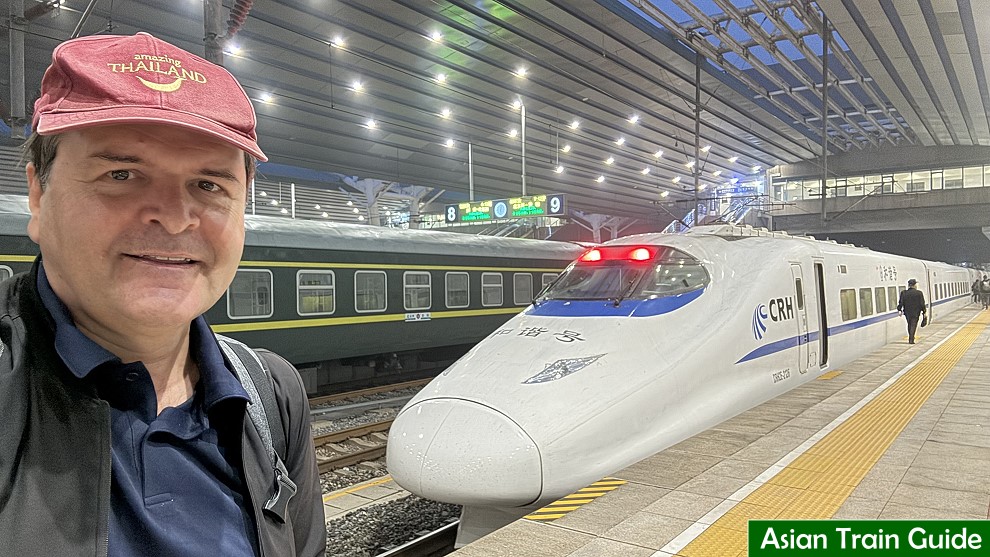
🇨🇳 TRAIN 10: Kunming South Station to Beijing West Station
🚂 D930
🗓️ Date of Travel: 14th October 2024
⏰ Departure: 15:29 | Arrival: 06:10
⏱️ Duration: 14 hours and 41 minutes
📏 Distance: 2,735 km (map of route)
🎟️ Ticket: $150 (lower berth), $135 (upper berth)
QUICK LINKS: TRAIN 1 | TRAIN 2 | TRAIN 3 | TRAIN 4 | TRAIN 5 | TRAIN 6 | TRAIN 7 | TRAIN 8 | TRAIN 9 | TRAIN 10
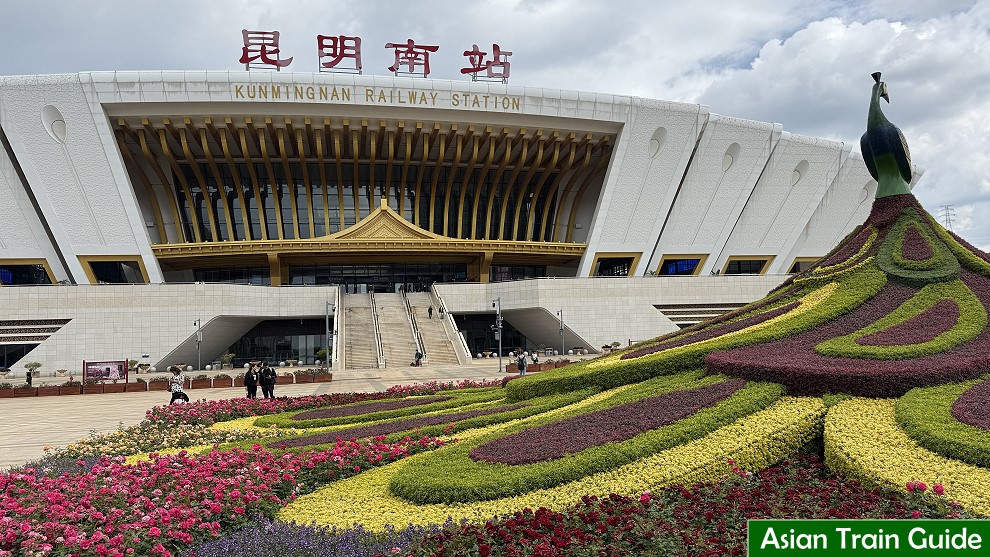
We boarded our train at Kunming South Railway Station (Kunmingnan Station), which took about an hour to reach from our hotel in the old part of the city. Kunming has six subway lines, and both the Red (Line 1) and Orange (Line 4) lines go to the railway station.
Once we arrived by subway, we went up one floor to the ticketing area, then another level to the concourse where passengers wait for their train. We passed through automated gates where locals scanned their ID cards. As a foreigner, I used the “manual verification channel,” where an attendant scanned my passport—no physical ticket was required.
Security was straightforward. Our bags were x-rayed, and we passed through a metal detector, though the process wasn’t overly strict. Bringing water wasn’t an issue.
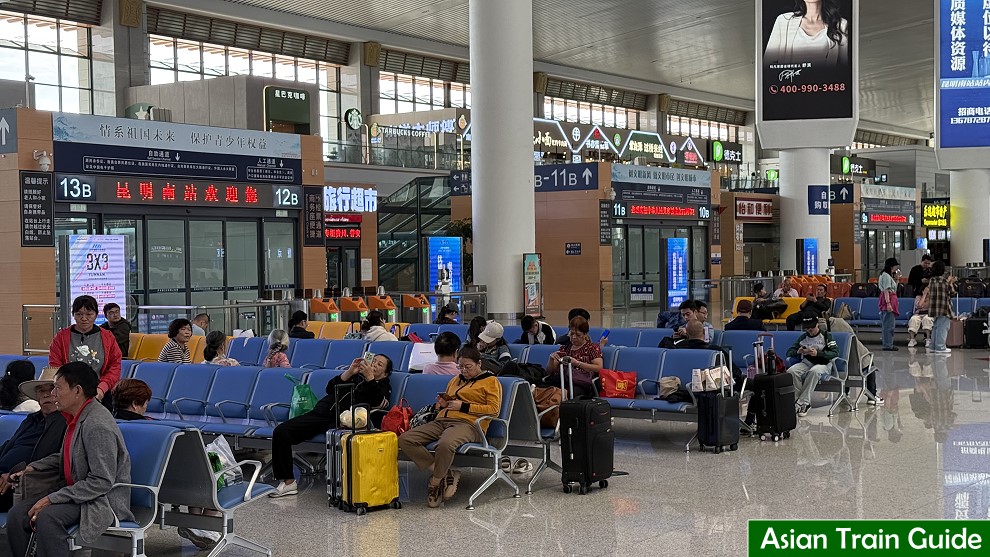
The main concourse is massive, with various gates leading to platforms. Our ticket indicated boarding from Gate 2A/3A. Most of the information on display boards is in Chinese, but looking for the train number helped us figure out the boarding and departure times. Boarding for us was at 3:15 p.m., with departure at 3:29 p.m.
There’s a mezzanine level above the concourse with restaurants like KFC and Starbucks. The concourse itself has shops selling snacks and drinks, especially pot noodles, as hot water is available both at the station and on the train. You can also buy travel essentials like charging cables and plugs, though food is the main focus.
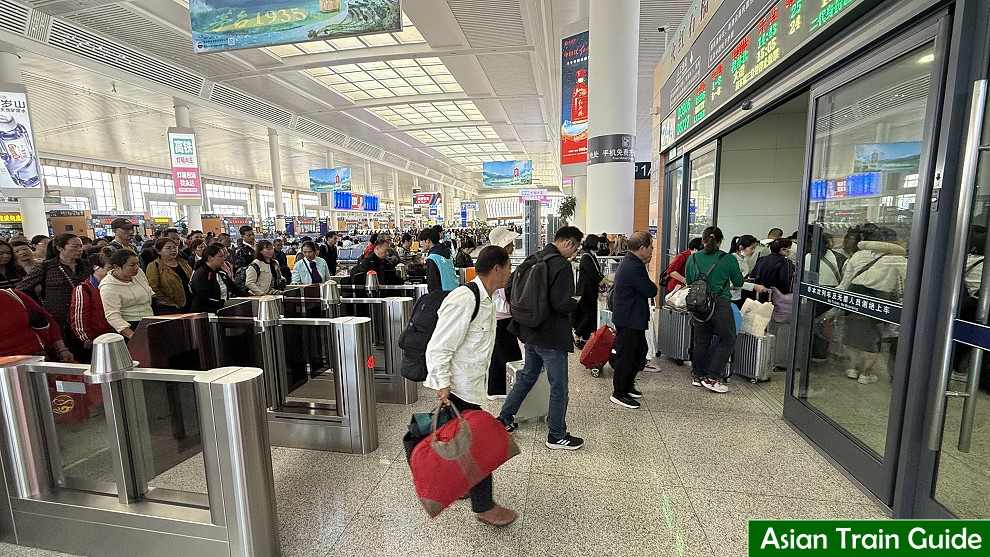
At around 3:10 p.m., we queued at the gate. Most people used self-service lanes with ID cards, but we went through the manual lane where an attendant scanned our passports. After that, we were allowed onto the platform.
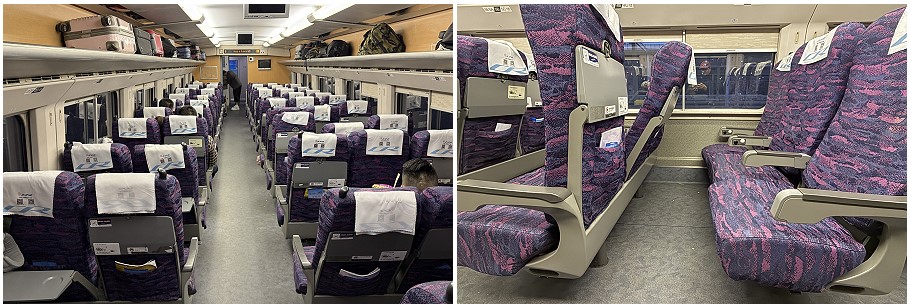
Our train had 16 carriages, with a dining car in the middle that had eight tables seating four people each. Second-class coaches at the ends had 55 seats arranged in a 2+3 configuration. The seats were well-padded and reclined, but I wouldn’t want to spend the night in one of them. Plug sockets were available but located in inconvenient spots.
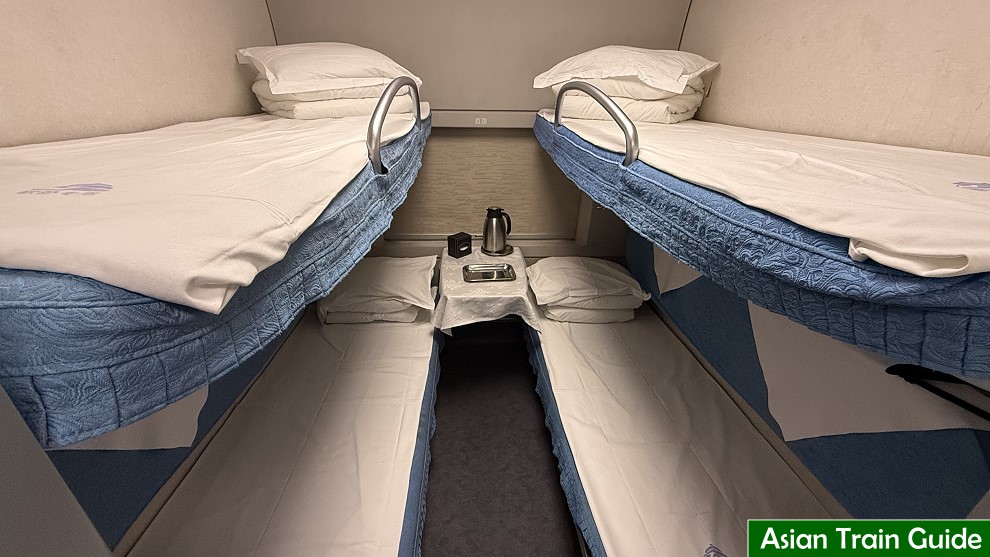
We were assigned to Car 2, Compartment 4, Beds 15 and 16, at the back of the train. Our compartment had four beds, so we shared it with two other passengers. The compartment featured a window with a blind, a lockable door, light switches, air-conditioning controls, and volume controls for announcements. Unlike sleeper trains in Thailand and Malaysia, there were no privacy curtains for each berth—you would need to book the whole compartment for privacy.
The upper berth had a fold-out step but no ladder. Each berth had a reading light and a coat hanger, with two plug sockets under the table, one of which was compatible with plugs from Thailand. The beds were already made with clean sheets, making it awkward for the upper-berth passenger to sit on the lower berth. However, fold-down seats in the corridor were available, and the dining car was another seating option. Plus, they served beer!
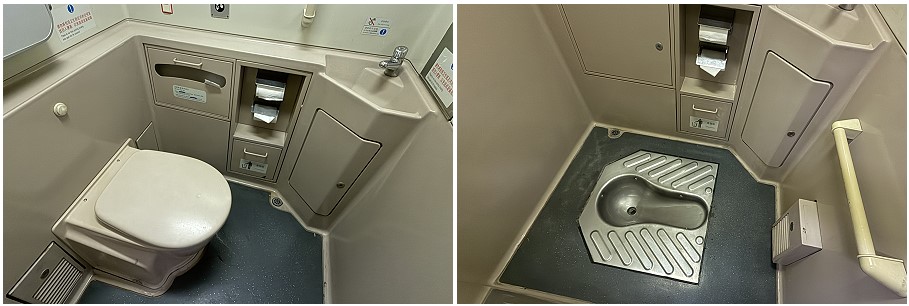
Each carriage had two toilets: one Asian squat toilet and one Western-style toilet. The first toilet I used was a bit smelly, but the others were fine. There were also washbasins with mirrors, toilet paper, hand paper, and soap available. Hot water was freely accessible for making coffee, tea, or instant noodles. Smoking wasn’t allowed on the train, though male passengers rushed out for quick cigarettes at each stop, which ranged from 2-3 minutes to one stop that lasted an hour.
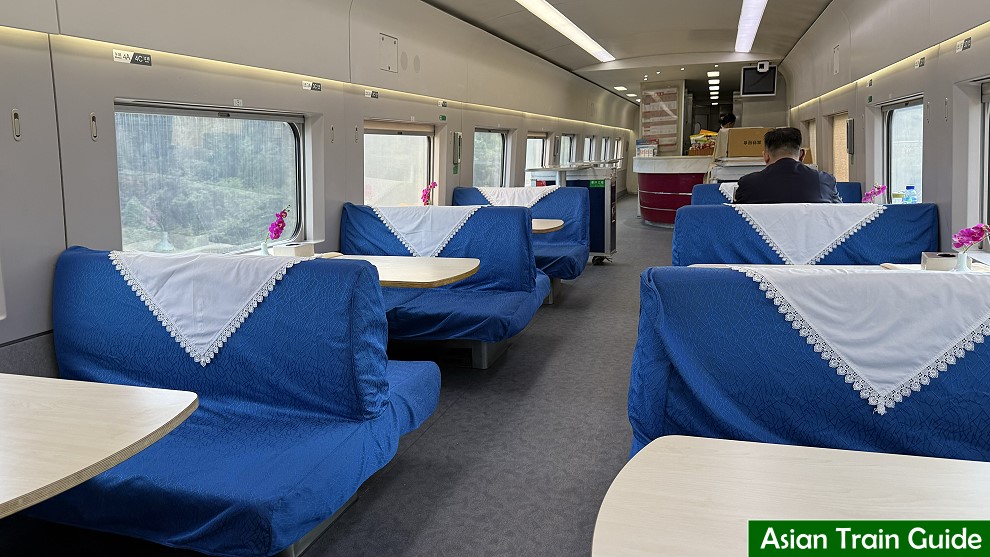
The dining car sold reasonably priced food, though it was reheated in a microwave. Drinks, including beer, were available, and later in the evening, snack boxes were distributed to all passengers.
The maximum speed I noticed was 245 km/h, with the ride being smooth and quiet. I slept through the night without interruptions, thanks to the absence of jolting or loud announcements, which I’d experienced on Thai trains. The lights were turned off, and earplugs were only necessary out of habit.
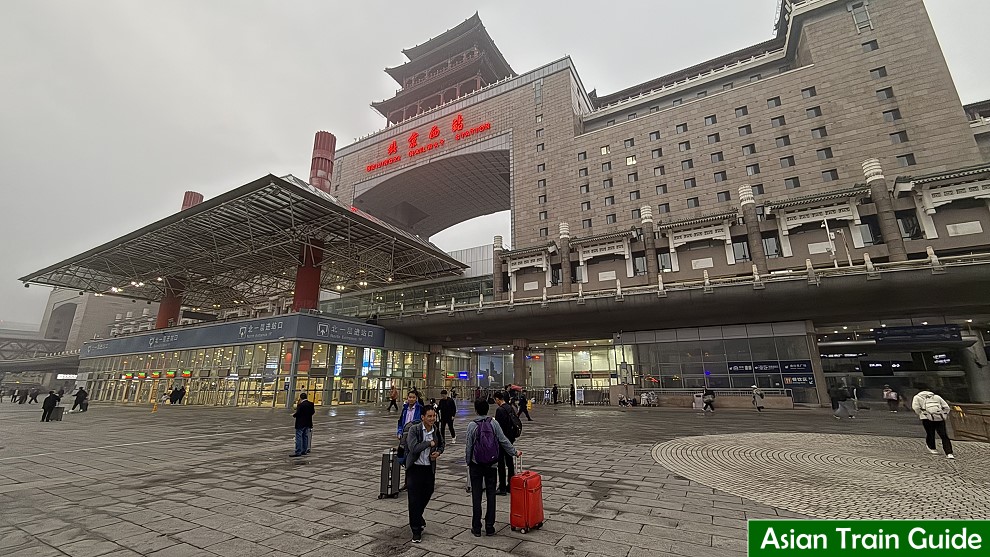
We arrived at Beijing West Station about ten minutes early. Since it was too early to check into our hotel, we had breakfast at the station. The subway station is located in the basement, and after passing through security, we used the Alipay app to scan a QR code to enter and exit the subway quickly and easily. From there, we could access Line 7 and Line 9 to reach other parts of Beijing.
Overall, this was a great introduction to high-speed trains. The downside was that the windows weren’t very clean, which made it difficult to take photos. Plus, there were several moments when I wanted to capture a great view, but we would go into another tunnel—this became a recurring theme of the trip. However, for those who aren’t focused on photography, the views can be really amazing.
➡️ BUYING TICKETS:
🇹🇭 Thailand: DTicket
🇲🇾 Malaysia: KTMB
🇨🇳 China: Trip Dot Com
➡️ TRANSPORTATION TICKETS IN ASIA:
✅ 12GO Asia
✅ Trip Dot Com
✅ Baolau
QUICK LINKS: TRAIN 1 | TRAIN 2 | TRAIN 3 | TRAIN 4 | TRAIN 5 | TRAIN 6 | TRAIN 7 | TRAIN 8 | TRAIN 9 | TRAIN 10
